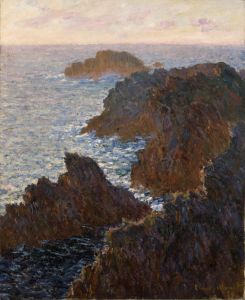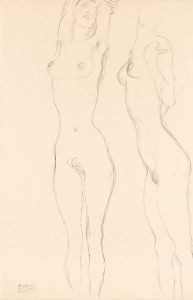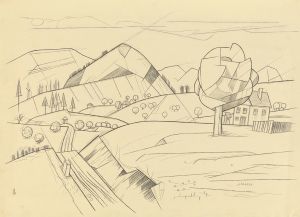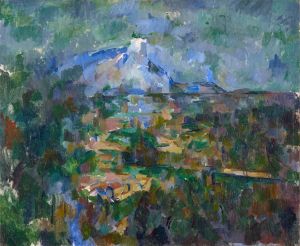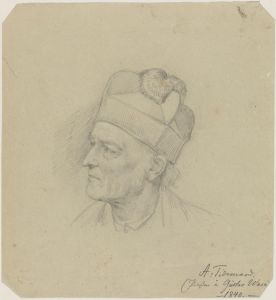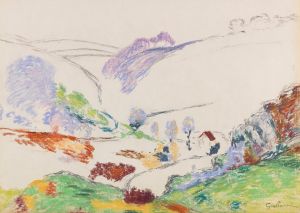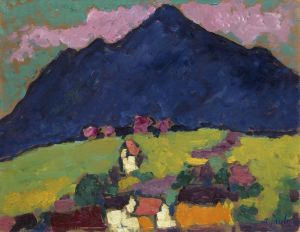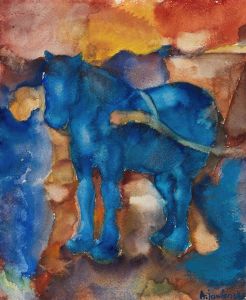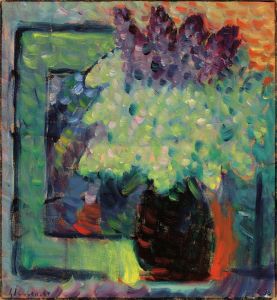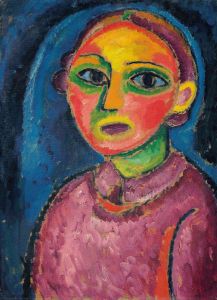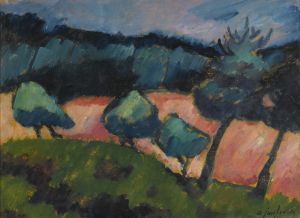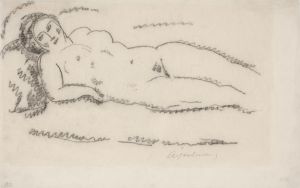
The Blue Mantilla
A hand-painted replica of Alexej von Jawlensky’s masterpiece The Blue Mantilla, meticulously crafted by professional artists to capture the true essence of the original. Each piece is created with museum-quality canvas and rare mineral pigments, carefully painted by experienced artists with delicate brushstrokes and rich, layered colors to perfectly recreate the texture of the original artwork. Unlike machine-printed reproductions, this hand-painted version brings the painting to life, infused with the artist’s emotions and skill in every stroke. Whether for personal collection or home decoration, it instantly elevates the artistic atmosphere of any space.
Alexej von Jawlensky was a Russian expressionist painter, known for his vivid use of color and emotive portraiture. One of his notable works is "The Blue Mantilla," which exemplifies his unique approach to capturing the essence of his subjects through bold colors and simplified forms. Jawlensky was part of the expressionist movement that sought to convey emotional experiences rather than physical reality, and "The Blue Mantilla" is a testament to this artistic philosophy.
"The Blue Mantilla" was created during a period when Jawlensky was deeply influenced by the Fauvist movement, which emphasized painterly qualities and strong color over representational or realistic values. This influence is evident in the painting's vibrant palette and the way color is used to convey emotion and character. The painting features a woman adorned with a blue mantilla, a traditional Spanish lace or silk veil worn over the head and shoulders, which adds an element of cultural richness and mystery to the portrait.
Jawlensky's technique in "The Blue Mantilla" reflects his interest in the spiritual and emotional dimensions of art. He often used color as a means to express the inner life of his subjects, and in this painting, the blue mantilla serves as a focal point that draws the viewer's attention to the woman's face, which is rendered with a sense of introspection and depth. The use of blue, a color often associated with tranquility and introspection, adds a layer of emotional complexity to the work.
The composition of "The Blue Mantilla" is characterized by its simplicity and focus on the subject's face, a common trait in Jawlensky's portraits. He often sought to distill the essence of his subjects into a few key elements, using bold outlines and flat areas of color to create a sense of immediacy and presence. This approach was influenced by his interactions with other artists of the time, including Wassily Kandinsky and Gabriele Münter, with whom he formed the Munich-based group Der Blaue Reiter, which played a significant role in the development of expressionism.
Jawlensky's work, including "The Blue Mantilla," was also shaped by his personal experiences and the broader cultural context of the early 20th century. Having fled Russia during the turmoil of the Russian Revolution, he settled in Germany, where he continued to develop his distinctive style. His paintings from this period often reflect a sense of searching and spiritual exploration, as he grappled with the challenges of exile and the changing world around him.
"The Blue Mantilla" is a significant example of Jawlensky's mature style, which combined elements of expressionism, fauvism, and his own spiritual and philosophical inquiries. Today, his work is celebrated for its contribution to modern art and its ability to convey profound emotional and spiritual truths through the medium of portraiture.





